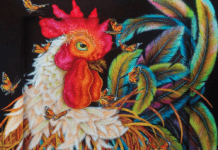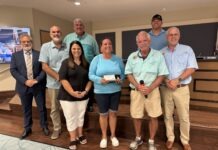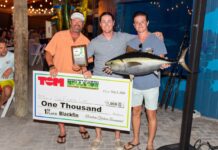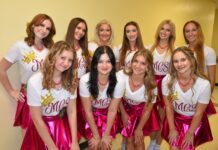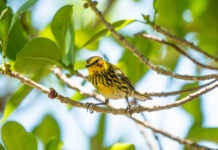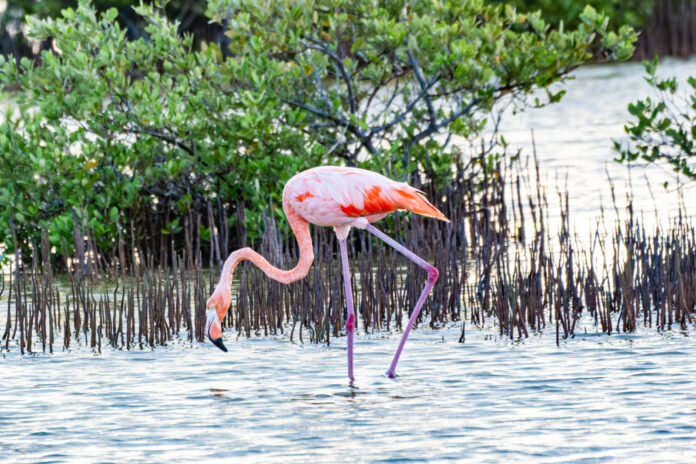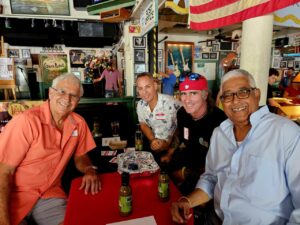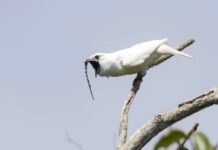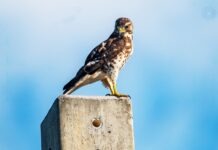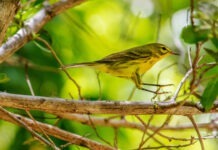This is the thing: I’ve seen American flamingos before. At least a dozen times in the U.S., maybe two dozen times, sometimes in groups, sometimes as solo acts. I’ve also seen them in Cuba, and, if I remember correctly, in Trinidad, though maybe I’m conflating that with a Jabiru stork. I missed them at a spot famous for them in Colombia but, you know, I’d seen them before, so no big deal.
But then we had this recent, post-Hurricane Idalia invasion, though a post-Hurricane Idalia diversion may be a better description. At least 100 different American flamingos have been spotted in various parts of Florida since the storm flung them from Mexico, possibly as they were trying to fly between the Yucatan and Cuba. They also appeared in such unexpected places as Ohio, Tennessee, Kentucky and Pennsylvania – places that don’t even have the decency to have them on their lottery tickets as we do.
For a while I was cool with it, all the pictures online from birders I knew all over the country experiencing the joy of seeing one of the world’s more oddly and spectacularly evolved species, and one that color-matched the summer’s Barbie theme to boot. My friend George Armistead up in Pennsylvania even saw one while he was wearing what were apparently flamingo-print pajamas.
But I have to admit I started to get a little jealous and spiteful. I mean, how much joy can you really take in other people’s happiness? That was tempered somewhat by the fact that it seemed there was a solid chance that American flamingos, at some point, would be showing up in the Keys, in what was once their common natural habitat.
Mark Whiteside, Ellen Westbrook and I spent a couple hours one Thursday night driving around looking for them in the Lower Keys, though we didn’t have much luck. The next night I was floating in the pool, where the algae had somehow once again regained the upper hand, and where I was feeling old and sorry for myself after a marathon photo session. Then a text came in from Mariah Hryniewich. She and Gianna Arcuri had cruised the salt ponds on Grassy Key after working at the Florida Keys Hawkwatch all afternoon, and ran into a bunch of other birders who were looking at a flock of eight flamingos.
I considered getting in the car and driving straight up there, but realized I wouldn’t make it before sunset. Which turned out to be fine. Mariah texted later to say they had gone to get something to eat, stopped back and the flamingos were gone.
Flamingos can be habitual, though, sometimes visiting the same sites repeatedly. So Mark, Ellen and I headed out the next morning, zig-zagging our way up the Keys, checking every salt pond we could, and stopping to ogle the occasional tiny butterfly. We made it to Keys Fisheries in time to get lunch and watch dark storm clouds roll in. We tried to wait out the weather, but then got impatient and headed up to Grassy Key, where we drove around with the windows half open, raindrops continuing to splatter on the windshield even though the sun had come out. We saw some birds, the best being a pair of American avocets, small waders with impossibly skinny legs and similarly skinny recurved bills. I have actually seen far fewer avocets than I have flamingos in the Keys, but somehow they felt like a consolation prize.
I tried to stop thinking about flamingos for a while. I’m heading out of town for a couple weeks soon, and there are a lot of things I need to get done beforehand. But they were seen on Big Pine and other places early in the week. Then they were seen on Ohio Key on Wednesday, and again on Thursday. When they were reported on Friday, I texted Mark and Ellen again. Mark begged off, but Ellen and I headed up the highway.
When we got to Ohio Key cars were parked along the side of the road, people with binoculars and cameras were walking around smiling. We looked down into the salt ponds, but there were no pink birds. We saw Mary Stella, who’d come down from Marathon, who said, “Oh yeah, they were here five or 10 minutes ago, but then they flew off, cleared the bushes at the end of the pond, dropped down and disappeared, so it was hard to say if they went north or south.”
I was starting to take this whole thing personally. It wasn’t so much about seeing the birds as not wanting to miss out on seeing the birds – flamingo FOMO, as the kids would say. Also, it’s a bit ego-deflating to write a newspaper column about birds every week, and have the unshakable feeling that the charismatic megafauna that everyone else in the world was seeing were avoiding you, no doubt out of some kind of collective avian spite.
Flamingos kept getting seen at Ohio Key, though, pretty much every afternoon. Sometimes it was one flamingo, sometimes it was three.
I was up the Keys doing some photo work a few days later when I saw yet another post from people seeing them. And instead of going back to Key West and doing the chores that needed doing, I went north, made it to Ohio Key, and pulled over (very carefully) on the side of the road. There were four or five other cars there. And down in the salt pond, like a pink exclamation point, there was one lone flamingo slow-stepping through the mud.
I sat and watched the bird for a while, took some okay pictures. A small front was coming in from the north, tendrils of rain hanging down here and there. It didn’t quite get cool, but there was an appreciable drop in temperature, so welcome after such a long summer, even though it wasn’t going to last.
The flamingo stuck his head under water, kept it there for a couple seconds, came up to breath, took a few more steps.
The sky took on a weird orange glow, then it went gray as the rain started, taking the color out of everything. Except the flamingo. The flamingo stayed pink. Because the flamingo abides.

